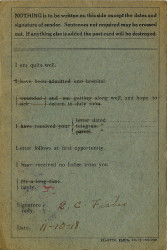Tess Porter
I'm the former User Experience Strategist at the Smithsonian Office of Educational Technology. Here, I focused on the use of digital museum resources to support teaching and learning. My work draws on my experience as a museum educator, digital analyst, usability researcher, and content designer. I hold a B.A. in Anthropology and a B.A. in Art History from University Colorado Boulder, and an M.S. in Museums and Digital Culture with an Advanced Certificate in User Experience from Pratt Institute.
Tess Porter's collections
Korean Art: Exploring Artistic Practices
 Tess Porter
Tess Porter
Korean Buddhist Painting: Looking Closely
 Tess Porter
Tess Porter
Korean Burial Practices in the Goryeo Period
 Tess Porter
Tess Porter
Letter Writing and Censorship in World War I
 Tess Porter
Tess Porter
Looking at Ancient Civilization through Objects
 Tess Porter
Tess Porter
Minnesota: Investigating a Place
 Tess Porter
Tess Porter
National Portrait Gallery’s Asian Pacific American Portraiture (Artists & Sitters)
 Tess Porter
Tess Porter
New Orleans & Place
 Tess Porter
Tess Porter
Object Analysis: Hawaiian Flag Quilt
 Tess Porter
Tess Porter
Portrait Analysis: Duke Kahanamoku
 Tess Porter
Tess Porter
Portrait Analysis: Lili'oukalani
 Tess Porter
Tess Porter
Portrait Analysis: Long Tack Sam
 Tess Porter
Tess Porter



